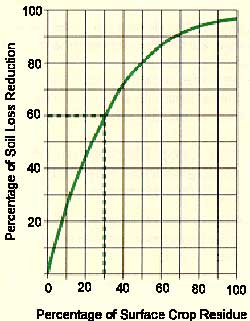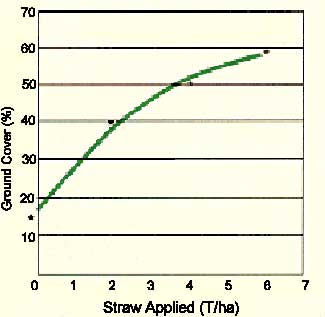Cover Crops To Protect From Erosion After Harvest
Soil erosion is a major concern of Manitoba potato producers. The best way to protect erosion-prone soils is to use a complete management system, comprising residue management, crop rotation, shelterbelts, annual barrier strip crops and cover crops. Many farmers are recognizing the benefits of cover crops, and are putting them to work in their farming systems.
What are Cover Crops?
A working definition of a cover crop is any crop grown primarily to provide ground cover to improve soil properties, rather than providing a harvestable yield. It is normally grown in the time period between regular crops, although it may be seeded into the preceding crop. Nearly any crop can be used as a cover crop, but some are more useful than others.
Advantages
The prime advantage of growing a cover crop is to keep the ground covered, as bare soil is an invitation for erosion by wind and water. Another benefit is the cover crop's effect on soil structure and tilth. The improvement in the stability of soil aggregates and water-holding capacity creates a better medium for crop growth. Crops with fibrous roots, such as the grass family, will have a more immediate effect on soil surface structure.
Cover Crop Management -
Considerations for Potato Land After Harvest
Drilling or broadcasting rye before Sept. 20 will provide good erosion protection the following spring.
A drilled stand of rye is more uniform than the broadcast-incorporated stand and more likely to produce grain.
Erosion-control benefits of cover crops will increase the earlier the crop is established.
The establishment of a broadcast-incorporated stand can be improved by increasing the rate of seeding or discing twice to incorporate the seed (disc-harrow packer operation).
Other Options to Reduce Erosion in Potato Land
Crop Residue Management - The following practices are recommended if a cereal crop is grown before potatoes (Figure 1): The combine should have a straw and chaff spreader to distribute residue evenly across the field. Harrowing may be necessary to help spread the straw and chaff.
Fall tillage of a light texture soil should result in no less than 65% ground cover. One single pass of a heavy-duty cultivator can reduce surface cover by about 20 to 30%.
Strip Cropping - (alternating strips of potatoes and a crop less prone to erosion) reduces the unsheltered width of erosion susceptible field. Crop strips should be perpendicular to the prevailing winds. The width of the strip will depend on the size of equipment used in cropping and the erodibility of the soil. Recommended strip widths vary from 76 feet in loamy sands to 300 feet in silty clay loams.
Shelterbelts - Shelterbelts should be planted perpendicular to the prevailing winds. A distance of approximately 660 feet between rows is recommended. The distance between green ash (within row) planting should be six to eight feet apart.
Mulch - A mulch can provide the same erosion control benefits as a well-established cover crop. Wheat straw (large round bales) spread over the field with a bale shredder can give good protection to the soil after harvest. Figure 2 shows at the highest level of application, 6T straw/ha, the ground cover by straw was estimated at 60%. This was still below the optimum level of 65% ground cover.

It's A Fact
- 1/32 inch, the thickness of a nickel, equals five tons of soil per acre.
- When visibility is reduced to 1/2 mile in blowing dust, fields may be losing as much as 3/4 ton of topsoil per hour.
Of the water that falls on tilled cropland, on average 66% evaporates, 25% runs into ponds or streams and only 9% enters the soil.

Wind Erosion and Soil Loss
On bare, dry soil, wind erosion can remove significant quantities of topsoil. Depending on the size of soil particles, soil movement by wind can occur three ways:
Surface creep - the largest soil particles roll or slide along the surface. They generally end up in the roadside ditch or along the fencelines.
Saltation - soil particles bounce up to 1 metre above the surface, dislodging other soil particles each time they hit the surface. These particles also collect along ditches, fencelines and other wind barriers.
Suspension - the finest soil particles are lifted into air and transported considerable distances.
| Table 1. Soil loss from 1992 windstorm and breakdown of soil movement | ||
| Site 1 | Site 2 | |
| Total Soil Loss (tons/acre) | 7.25 | 8.23 |
% Soil Loss from: | ||
|
1 | 1 |
|
81 | 69 |
|
18 | 30 |
| *The field length was 400 metres. Soil loss was calculated in kilograms on an area of 0.1 ac (one metre wide and 400 metres long). | ||

